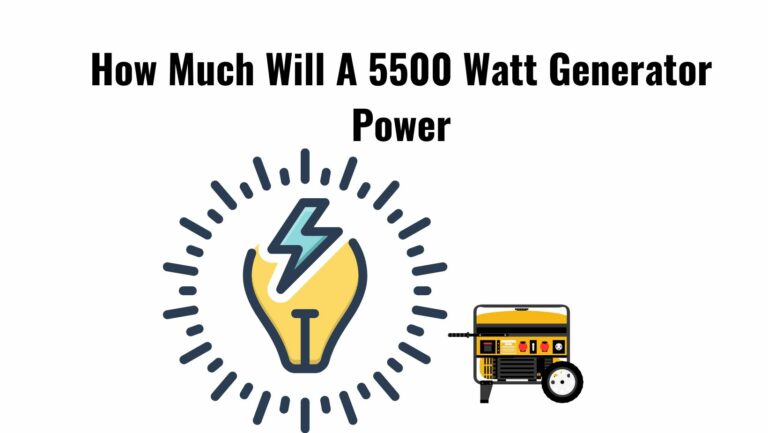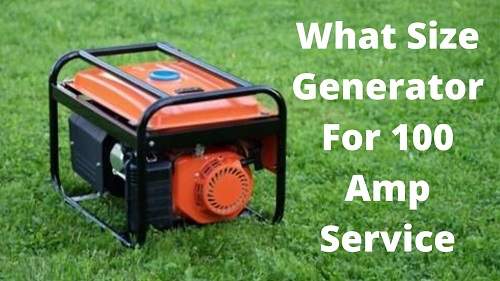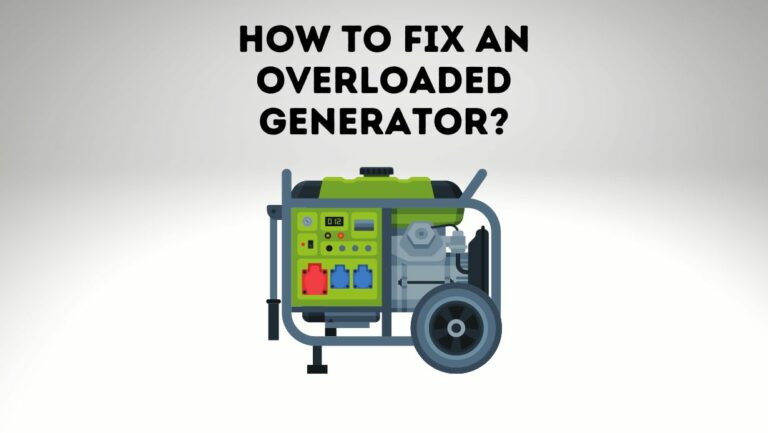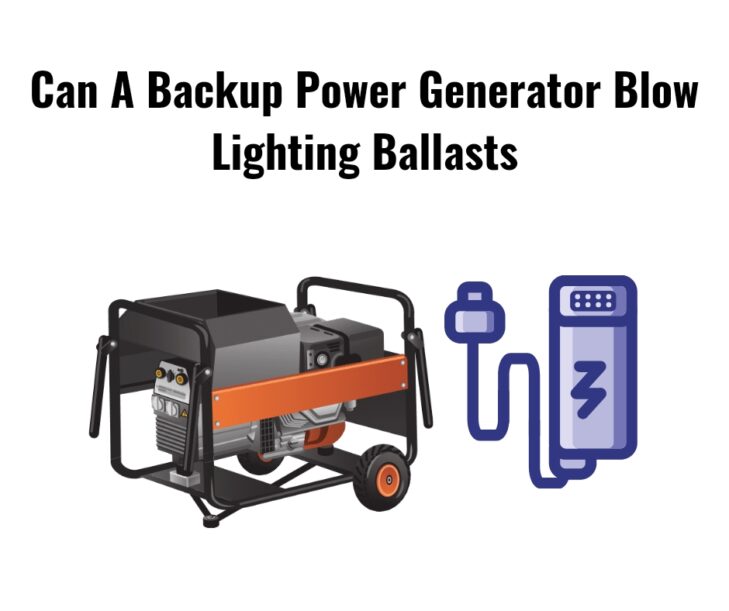
Backup power generators are essential components in today’s society. They provide a reliable source of electricity during power outages, ensuring that critical systems and equipment continue to operate even when the main power source is unavailable. Whether it’s a residential home, a small business, or a large commercial operation, backup power generators are an important investment that can help protect against costly downtime and ensure that critical systems continue to function.
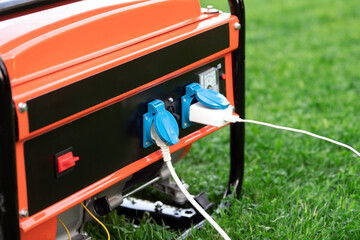
In this blog post, we will focus on one specific aspect of backup power generators: their impact on lighting ballasts. Lighting ballasts are an essential component in most lighting systems and regulate the flow of electricity to the light fixtures.
Understanding the potential impact of backup power generators on lighting ballasts is important for ensuring that your lighting system continues to operate effectively and efficiently.
Understanding Lighting Ballasts
Lighting ballasts are essential components in the operation of lighting systems, particularly in commercial and industrial settings. A lighting ballast serves two main purposes: to regulate the voltage supplied to a light bulb and to limit the amount of current that flows through it. Without a ballast, the bulb would either burn out too quickly or not light up at all.
A lighting ballast is an electrical device that regulates the voltage and current supplied to a light bulb. It acts as a sort of bridge between the power source and the bulb, allowing the bulb to receive the right amount of power to operate efficiently and safely.
How Lighting Ballasts Work
Lighting ballasts use a combination of capacitors, inductors, and other components to regulate the voltage and current supplied to a light bulb. When the bulb is first turned on, the ballast restricts the flow of current to the bulb, allowing it to warm up gradually and avoiding damage. Once the bulb is fully heated, the ballast then regulates the voltage and current to ensure that the bulb operates at the optimal level.
Different Lighting Ballasts
There are several types of lighting ballasts, each designed to work with specific types of bulbs. Some of the most common types include magnetic ballasts, electronic ballasts, and high-frequency ballasts.
Magnetic ballasts are the most traditional type of ballast and are used with older-style T12 fluorescent bulbs. These ballasts use an electromagnetic field to regulate the voltage and current supplied to the bulb.
Electronic ballasts are more energy-efficient and operate at a higher frequency than magnetic ballasts. They are typically used with T8 and T5 fluorescent bulbs and compact fluorescent lamps (CFLs).
High-frequency ballasts are the newest type of ballast and use high-frequency technology to regulate the voltage and current supplied to the bulb. These ballasts are even more energy-efficient than electronic ballasts and are typically used with LED lights.
However, lighting ballasts play a crucial role in the operation of lighting systems and are essential for ensuring that bulbs receive the correct amount of power to operate efficiently and safely. Understanding the different types of ballasts and how they work is key to selecting the right ballast for your lighting needs.
Can a Backup Power Generator Blow Lighting Ballasts?
When it comes to emergency power supply, backup power generators play a crucial role. However, there are several factors that can cause lighting ballasts to fail, even when powered by a backup generator. Understanding these factors and selecting the right generator for your needs is crucial in avoiding lighting ballast failure.
Factors that cause lighting ballast failure
There are several reasons why lighting ballasts can fail, including overheating, vibration, and age. In addition, exposure to power surges and fluctuations can also cause lighting ballast failure. Power surges can occur when there is a sudden increase in voltage in an electrical system, which can cause damage to electrical components, including lighting ballasts.
Importance of selecting the right generator for your needs
It’s crucial to select the right generator for your needs, as using a generator that is too small for your requirements can result in frequent power surges. Using a generator that is too large can cause power fluctuations, which can also damage to lighting ballasts. When selecting a generator, it’s important to consider the size of your electrical system, the power requirements of your equipment, and the length of time that you need to use the generator.
The impact of power surges on lighting ballasts
Power surges can have a significant impact on lighting ballasts, causing them to fail or become damaged. This can result in reduced lighting efficiency, flickering lights, and even total failure of the lighting system. To avoid power surges, it’s important to use surge protectors or voltage regulators to regulate the voltage supplied by the generator.
While backup power generators can be a lifesaver during power outages, it’s important to understand the factors that can cause lighting ballast failure and select the right generator for your needs. By taking these precautions, you can avoid power surges and ensure the longevity and efficiency of your lighting system.
Prevention and Maintenance of Lighting Ballast Failure
As with any electrical equipment, lighting ballasts are susceptible to failure, especially if they are exposed to power surges. Fortunately, there are steps you can take to minimize the risk of lighting ballast failure and extend the life of your system.
Regular maintenance of backup power generators
Proper maintenance of your backup power generator is essential in ensuring its reliability and longevity. Regular maintenance should include cleaning, oil changes, and inspecting electrical components for damage. This will help prevent unexpected power outages and minimize the risk of power surges that can damage lighting ballasts.
Use of surge protectors to prevent power surges
Surge protectors are an effective way to prevent power surges from damaging your lighting ballasts. They work by diverting excess voltage away from your electrical system and into the ground. Surge protectors are especially important for locations that are prone to power surges, such as near electrical substations or areas with frequent lightning strikes.
Replacing aging or damaged lighting ballasts
Aging or damaged lighting ballasts can be a source of power surges and can cause damage to your system. If you notice any flickering lights or other signs of electrical problems, it is important to replace the damaged ballast as soon as possible to avoid further damage. Regular inspections and maintenance can help you identify and replace aging or damaged lighting ballasts before they become a problem.
Final Thoughts on Backup Power Generators and Lighting Ballasts
Backup power generators play a critical role in ensuring the continuity of power supply during outages. Lighting ballasts are equally important in maintaining the stability of lighting systems and avoiding electrical problems. A combination of proper maintenance and the use of surge protectors can help extend the life of lighting ballasts and reduce the risk of failure.
Recommendations for Avoiding Lighting Ballast Failure:
- Regularly maintain your backup power generator to ensure its reliability and longevity.
- Use surge protectors to prevent power surges from damaging lighting ballasts.
- Replace aging or damaged lighting ballasts promptly to prevent further damage to your system.
However, proper maintenance and the use of surge protectors are essential in ensuring the stability and longevity of the backup power generators and lighting ballast systems. By following these recommendations, you can reduce the risk of lighting ballast failure and keep your system running smoothly.

